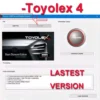What EV to buy? Leave a comment
Are All EVs Good? Are Hybrids Really That Bad?
This is a topic we’ve been contemplating for some time due to frequent inquiries. It’s incredibly complex and requires extensive experience and information, both inside and outside our laboratory. This article, which we will periodically update based on new data, will focus solely on “real-life” experiences and events, free from sponsorships or media influence.
Over the past five years, both as a user and as a technician who repairs EVs, we’ve identified which vehicles to avoid and which ones are reliable. We’ll cover when issues typically arise, the costs of repairs and parts, and overall sustainability.
Battery Systems in EVs
The battery system is the most critical and often the most expensive component of any EV. While most batteries are repairable, they do degrade over time and usage. When degradation exceeds 50%, the battery is considered technically unserviceable and requires replacement. Often, individual cells within a battery cannot be substituted, necessitating the purchase of a new or used battery system.
Based on our experience and data from 15-20 different global locations, battery failures are low on the list of concerns over a decade of EV use. Common issues are more likely with:
- Electric Motors
- OBC Chargers
- DCDC/Inverters
- Batteries
Some EVs don’t experience any failures or require service over ten years, leading to significant cost savings compared to fossil fuel vehicles.
Comparing EVs to Fossil Fuel Vehicles
Even with potential repairs, EVs are cheaper to maintain than fossil fuel vehicles. Fossil fuel cars cost an average of €0.13 per kilometer in fuel alone, not including maintenance and repairs, which add at least €0.08 per kilometer. Over 200,000 km, this amounts to over €40,000. Thus, even a faulty EV is more economical than a fully functional fossil fuel vehicle.
Battery Repairs and Life Cycle
Battery systems operate in cycles. The first cycle lasts 5-8 years before any issues arise, during which modules or cells are replaced. After this, maintenance every 2-3 years extends the battery’s life cost-effectively. However, restoring a battery to its original 8-year, 200,000 km capacity is not feasible. Repairs typically extend battery life by 2-3 years or 100,000 km, depending on the model.
Hybrid Vehicles: A Critical Look
Hybrid batteries often deplete their charge cycles faster due to constant overuse. At around 100,000 km, they typically require replacement. The notion of “battery regeneration” is a myth; once cells are exhausted, replacement is the only option. Hybrid batteries can be the most expensive, sometimes even pricier than EV batteries.
Recommendations for Used EVs
Tesla Models (S, 3, X, Y): Despite negative media coverage, Tesla produces some of the best powertrains. The Model S and X use Pansonic cylindrical cells, while Models 3 and Y use a mix of cylindrical and prismatic cells. Tesla’s battery systems have proven reliable, though Model S and X require sealing to prevent water ingress.
Maintenance and Repairs:
- Motors: Last approximately 500,000 km; repairs cost about €1,800.
- Battery System: Minor issues at 200,000-300,000 km; repairs range from €800-€4,500.
- OBC Chargers: Fail at 300,000-500,000 km; repairs cost around €1,200.
Other Notable EVs
Hyundai Ioniq 28kWh: Known for its reliability, with no significant recorded issues. Costs range from €10,000 to €16,000.
VW eGolf: Surprisingly reliable despite initial skepticism. Major repairs typically cost:
- Motors: €1,400 for repairs.
- Battery System: Minor issues at 150,000-250,000 km; repairs range from €800-€2,500.
VW eUp/Skoda Citigo e iV: Reliable city cars, though winter range drops significantly due to lack of thermal management.Repair costs are similar to the eGolf.
What About Hybrid Vehicles, are they any good?
Overview: We have repeatedly debunked the notion of hybrids as sustainable with real-world examples. Despite updates to our findings, our stance remains firm: we do NOT recommend any hybrid vehicles. Opt for either a fully electric or a traditional gasoline engine.
Case Study: Battery Replacement Issues A stark example is a hybrid vehicle requiring a battery change at 90,000 km, only to need another complete replacement at 150,000 km. For more details, visit this link.
Sustainable Hybrid Systems: Range Extenders The only viable hybrid systems are Range Extenders (REX), where the primary drive is electric, supplemented by a small generator. BMW’s i3 and i8 models exemplify this concept, featuring batteries robust enough to handle stress without significant wear.
Cost and Maintenance Concerns:
- Hybrid batteries are often more expensive than those in pure EVs, ranging from €10,000 to €32,000 (e.g., Range Rover).
- Most hybrids have their batteries replaced once under warranty (before 100,000 km), then again at 200,000 km when out of warranty.
- Misguided attempts to import these hybrids as a cheaper alternative often lead to high costs due to battery replacements that exceed the vehicle’s value.
Misconceptions and Realities:
- Many believe lithium-ion batteries can be “regenerated” cheaply, but this is false. Battery cells often degrade beyond second-life applications.
- Statements like “the battery costs more than the car” originate from hybrid vehicles (and Nissan Leaf) due to mainstream misinformation about EV battery problems.
Sustainable Battery Capacity: A sustainable hybrid system should have at least a 40-50 kWh battery. Otherwise, relying on the electric drive alone raises the question of why an internal combustion engine (ICE) is necessary at all.
Notable Exceptions and Issues:
- Toyota Prius: Early models are somewhat sustainable due to their affordable NiMH batteries, costing about €1900 for a replacement at authorized services. However, design flaws cause premature battery degradation, with significant issues arising around 100,000 km.
- Battery maintenance often reveals poor system design, leading to early overheating and damage.
- Although Toyota’s battery systems are designed to last, real-world use shows frequent need for cell replacements.
Mild Hybrids: Mild hybrids are expensive to maintain and often problematic, with the notable exception of Suzuki, which has proven reliable.
Conclusion: While hybrid vehicles present an attractive middle ground between fossil fuels and full electrification, they often fall short in terms of long-term sustainability and cost efficiency. Fully electric or gasoline-powered vehicles remain the more reliable and economical choices for consumers.





